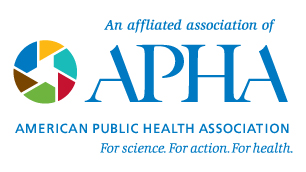Addiction Prevention SectionNote as of July 2023 The Executive Leadership Team of the Addiction Prevention Section has voted to exit the Oregon Public Health Association to launch a new, separate organization under a fiscal relationship with the Oregon Council on Behavioral Health (OCBH). T Overall, the relationship between the members of the AP Section and the OPHA has been a very useful and fruitful experience. We wish to express our gratitude for the warm welcome that OPHA provided for our field of professionals in 2017. We look forward to maintaining and opening up collaboration on shared goals with remaining AP Section members, OPHA, and other partners throughout Oregon. Our last day of formal engagement with the AP Section will be August 15, 2023. The new organization, called Oregon Coalition of Prevention Professionals (OCPP), will operate as a separate organization under the fiscal agency of the OCBH. This will afford the new organization the autonomy desired while maintaining the fiscal and staff support available under the fiscal agent. PurposeThe purpose of the Addiction Prevention Section of the Oregon Public Health Association is to act as a representative group of the health promotion and addiction prevention professionals, coalitions, and community partners in the State of Oregon. The Section advances community-based prevention throughout Oregon by focusing on five core principles: prevention best practice, leadership, professional development, community advocacy, and connectivity among prevention partners. The Section identifies the professional development and technical assistance needs of prevention professionals, and collaborates with the OHA Public Health Division to create and/or steward training, resources, and support for professionals working in the field. The Section serves as an influential voice in policy (local, state and national), programming, and funding with regard to the following prevention topics: alcohol, tobacco, marijuana, prescription drugs, illicit drugs, problem gambling, sexual health, mental health and other related community health issues. AP Section Definition and Implementation of PreventionDEFINITION OF PREVENTIONPrevention efforts (both individual and community) are designed to:
*The definition of risky behavior or behavior disorder may vary according to topic and/or by age. HOW WE IMPLEMENT PREVENTIONPrevention strategies may address any of the following populations, and be offered to people across the entire life-span whenever possible:
We use a variety of guiding frameworks and models to implement inclusive, equitable, and sustainable prevention efforts. Preventionists adhere to a code of ethics with six core principles: 1) non-discrimination; 2) competence; 3) integrity; 4) nature of services; 5) confidentiality; and 6) ethical obligations for community and society. To learn more about Prevention Foundations, check out these video resources. Section LeadershipAP Section History and Overview - 3 minute video link
Section NewslettersSign up to receive bi-annual Section Newsletters HERE February 2022 Upcoming EventsResources“Addictionary – The words we use matter. Caution needs to be taken, especially when the disorders concerned are heavily stigmatized, such as substance use disorder. This tool provides vocabulary and stigma alerts for words that may have previously been regularly used, but have been shown over time to carry the weight of stigma or that may have unintentional negative connotations. Prevention Learning Opportunities Prevention Specialist Certification information (Mental Health & Addiction Certification Board of Oregon)
Figure 1. Spectrum of Mental, Emotional, and Behavioral Health Services. 2019. |


